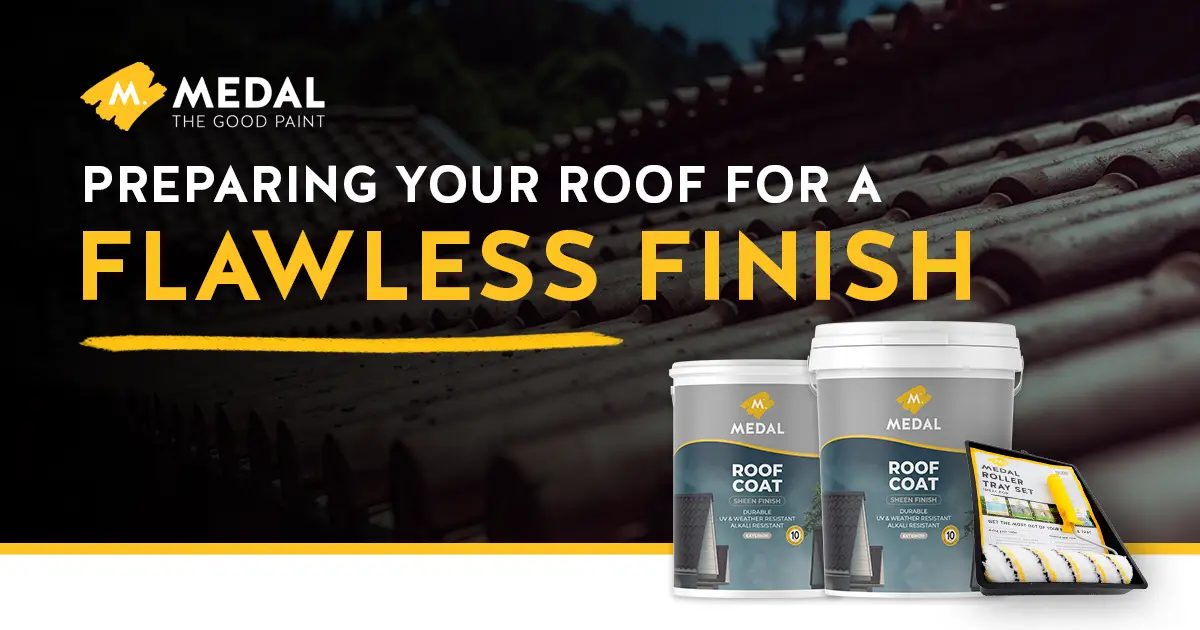Ensuring the longevity and aesthetic appeal of your roof is paramount for any homeowner. A high-quality coating, such as Medal Roof Coat, offers excellent protection against the elements and enhances the overall look of your property. However, achieving optimal results requires meticulous preparation. This article outlines the essential steps homeowners should take to prepare their roof for a new coat of Medal Roof Coat, emphasizing the importance of each stage and highlighting crucial safety considerations.
Step 1: Thorough Inspection and Assessment
Before commencing any preparation, a comprehensive inspection of your roof is crucial.
Why it’s important: This step allows you to identify any existing damage, such as cracked or missing tiles, loose flashing, or areas of moss growth. Addressing these issues before applying the new coating is essential for ensuring the integrity and longevity of the final finish. Coating over damaged areas will not solve underlying problems and may even exacerbate them. Furthermore, identifying the type of roof material will inform the subsequent cleaning and preparation methods.
Step 2: Comprehensive Cleaning
A clean surface is fundamental for the proper adhesion of Medal Roof Coat.
Why it’s important: Dirt, dust, mildew, algae, and other contaminants can impede the coating’s ability to bond effectively with the roof surface. This can lead to premature peeling, blistering, and a compromised protective layer.
For tiled roofs: Use a stiff brush to remove loose debris. For stubborn growth like moss, consider using a specialized roof cleaner designed for your roof material, following the manufacturer’s instructions carefully. Rinse thoroughly with a low-pressure hose. Avoid high-pressure washing, as it can damage tiles and force water under the roof covering.
For metal roofs: Brush away loose dirt and debris. Wash the surface with a mild detergent solution and a soft brush or cloth. Rinse thoroughly with clean water, ensuring no soap residue remains.
For asbestos cement roofs: Exercise extreme caution. These materials can release harmful fibres if disturbed. It is highly recommended to consult with a professional roofing contractor specializing in asbestos removal and preparation. If you undertake the cleaning yourself (following strict safety guidelines), use a low-pressure hose and avoid scrubbing or scraping. Keep the material wet during cleaning to minimize fibre release.
Step 3: Repairing Existing Damage
Addressing any identified damage is a critical step before applying the coating.
Why it’s important: Coating over damaged areas will not provide a long-lasting solution. Water ingress through cracks or gaps can lead to structural damage and compromise the effectiveness of the roof coating.
Cracked or missing tiles: Replace damaged tiles with matching spares. Ensure they are securely fixed.
Loose flashing: Secure any loose flashing around chimneys, vents, and roof edges. Use appropriate sealant or fasteners designed for roofing applications.
Damaged mortar: Repoint any crumbling or missing mortar in tiled roofs.
Rust on metal roofs: Treat any areas of rust with a suitable rust converter and primer before applying the roof coat.
Step 4: Priming (If Necessary)
Depending on the type and condition of your roof, a primer may be required to ensure optimal adhesion and performance of Medal Roof Coat.
Why it’s important: Primers create a uniform and stable surface for the topcoat to bond to. They can also improve adhesion on porous surfaces or those with slight staining. Consult the technical data sheet for Medal Roof Coat to determine if a primer is recommended for your specific roof material and condition. Apply the primer according to the manufacturer’s instructions, ensuring even coverage.
Step 5: Applying Medal Roof Coat
Safety Considerations:
Working on a roof inherently involves risks. Prioritizing safety is paramount.
Weather conditions: Never work on your roof during wet, windy, or icy conditions. Wait for a dry and calm day.
Footwear: Wear appropriate non-slip footwear with good grip. Avoid wearing smooth-soled shoes.
Ladders: Use a sturdy and stable ladder that is tall enough to safely access all areas of the roof. Ensure the ladder is placed on a level surface and is properly secured to prevent slipping. Consider having a helper to stabilize the ladder.
Fall protection: For steep or high roofs, consider using appropriate fall protection equipment, such as safety harnesses and lifelines, anchored securely to the roof structure. If you are uncomfortable working at height, it is strongly recommended to hire a professional roofing contractor.
Eye and skin protection: Wear safety glasses to protect your eyes from debris and cleaning solutions. Wear gloves and long sleeves to protect your skin from chemicals and potential abrasions.
Communication: If you are working with a helper, establish clear communication signals.
Power lines: Be acutely aware of any overhead power lines and maintain a safe distance.
By following these steps diligently and prioritizing safety, homeowners can effectively prepare their roofs for a new coat of Medal Roof Coat, ensuring a durable, aesthetically pleasing, and long-lasting finish that will protect their investment for years to come. Remember to always consult the product data sheets for specific application instructions and safety guidelines related to Medal Roof Coat. If you are unsure about any aspect of the preparation or application process, or if you are uncomfortable working at height, do not hesitate to seek the services of a qualified professional roofing contractor.




